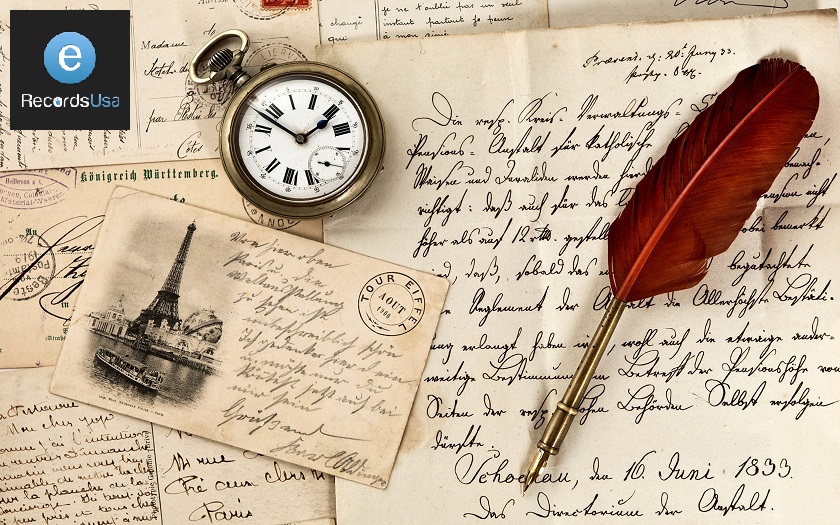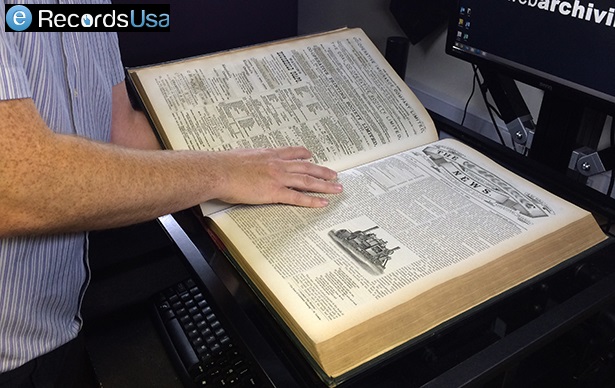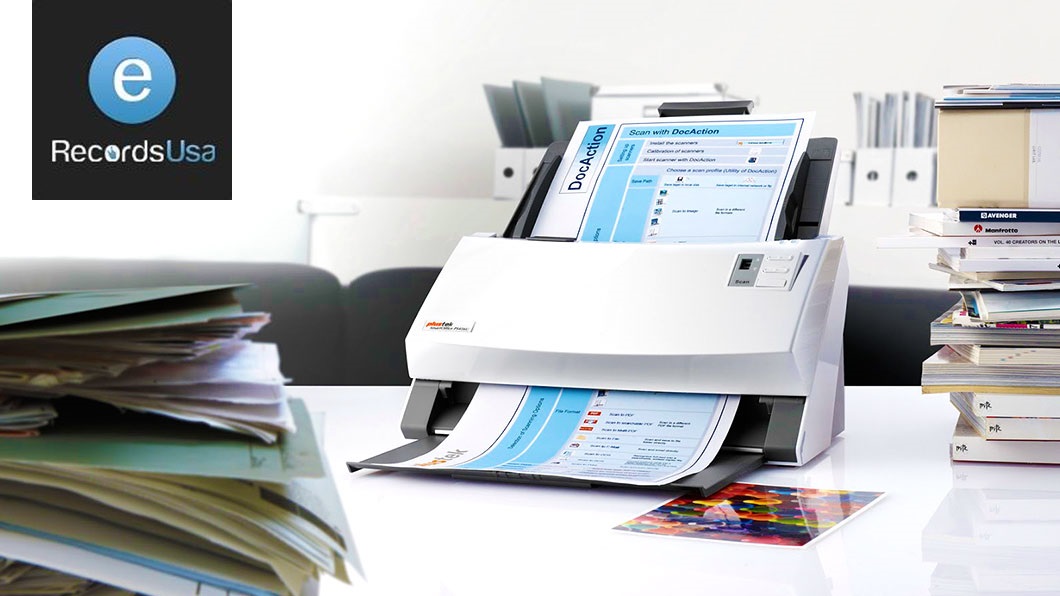History of Record Retention & Document Scanning
What a relief it must’ve been for office workers in Manz, Germany, in 1450 when Johannes Gutenberg finally built a commercially viable printing press. Until then, scribes who copied books and important documents checked their work by counting the number of letters on a page, which had to match exactly the number of letters on the page from which they were copying.
After the invention of Gutenberg’s press, the number of books, pamphlets, and written documents skyrocketed. It’s estimated that, prior to the invention of the press, all the books in the world could have easily fit inside a middling sized library.

Within 50 years of the invention of the press, there were 20 million books in existence. Within 150 years, there were 200 million books in Europe alone.
Not many of those books are around today. Despite the printing revolution sparked by the press, paper reproduction of documents has always had drawbacks and limitations.
Paper itself is a volatile substance, subject to destruction by fire, water, mold, and time. It also tends to take up a lot of space, can be expensive to use for reproductions, creates pollutants, and is not permanent. This means that data kept on paper must eventually be re-recorded.
Fortunately, we have moved into another period of revolutionary record-keeping. Most of us use some type of digital format to retain our important business and personal data.
From these digital platforms, we are able to print portions of our records for whatever necessary temporary purposes we might have. The problem is this type of digital record-keeping has only been widely available to us for a few years. As individuals and business people, many of us have records going back for decades.
Historical archivists may have paper records dating back centuries. While we know that we are going to use digital documenting going forward, we often don’t recognize that it is vitally important to go backward and digitize all those paper records.
Historical/Legacy Document Scanning

Here are some of the most important reasons that we, as individuals, should dig out those genealogy scanning services wills, letters, and written records and commitment them to digital reproduction:
- Scrapbooks aren’t forever. The feel of turning the pages of old letters and holding keepsakes is wonderfully nostalgic and uplifting. On the other hand, our memorabilia’s usefulness to generations yet unborn will overwhelm the survivability of the best-kept scrapbook. Digitize the memories; then put them back in the book.
- Legal and financial documents kept in the cloud are not subject to fire, flood, or theft.
- Coming generations of optical character recognition will adapt our digital records for posterity; to say that another way, by digitizing, we are creating time capsules in a way our ancestors simply could not.
Linking Our Organization’s History to Its Future
Beyond our personal need to preserve records, many of us belong to businesses and organizations with mountains of paper records. The sheer volume of the records to be converted is often a disincentive to digitization.
The recognition that all the organization’s previous data is already on paper even results in some businesses and organizations deciding to avoid embarking on digitizing any of their data.
On the other hand, the loss of old records or the inability to access them quickly when needed prompts cries of “why didn’t we convert these to a digital format?”
Here are some of the most important reasons to convert paper records into digital archives:

- For current businesses and active organizations, digitizing archives makes it possible to access all past data immediately. A consistently formatted document platform makes it possible to draw upon data from 100 years ago as quickly as from yesterday.
- Digital formatting allows multiple users to access data simultaneously and eliminate the possibility of missing documents and data. You don’t have to worry about which employee has forgotten that he or she had a certain report under a pile on her or his desk.
- Multiple digital usages reduce the need for duplication. Every verified person sitting at the conference table can access specified materials from their personal digital devices.
- Digital material, unlike paper records, can be encrypted and protected in a variety of ways from those who should not have access.
- There are no space limitations for digital storage. Physical copies of documents imply storage and safe-keeping expenses. Multiple digital copies of records kept in the cloud and externally are comparably inexpensive.
- Digital formatting means that documents and data can quickly be transformed from one type of file to another. Intentionally saving records in different formats can be programmed into the saving process.
Closing Thoughts
Looking back on Gutenberg’s contribution to the evolution of human civilization, we can easily recognize the benefits of the printed press. The press made it possible to capture and convey information and ideas and thus transformed the very fabric of human life.
It’s important to remember this now because our age has likewise embarked on a similar revolutionary journey: the digitization of information and ideas.
Indeed, each time we save something digitally rather than printing it on a piece of paper, we perpetuate the revolution.
GET FREE QUOTES ON YOUR DOCUMENT SCANNING SERVICES TODAY!
eRecordsUSA is specialized in providing Document Scanning & Management Servcies like, Document Archival Service / Document Scanning Service.
Would you like to receive a free quote for Document Archival Services? Call +1.510.900.8800 or eMail us at [email protected]
Electronic Records Management (ERM) ensures your organization has the records it needs when they are needed.Records management is primarily concerned with the evidence of an organization’s activities, and is usually applied according to the value of the records rather than their physical format.













